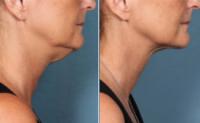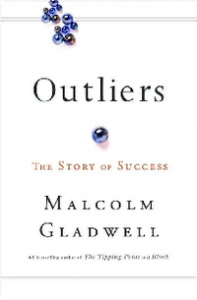I would never want to sound like a “blowhard,” but I write this mostly to answer a recurrent question from many patients. My practice offers unique and interesting, but divergent areas of surgical subspecialty. I am often asked how I ended up where I am, and doing exactly the kind of work I do. I always answer the same way, although a bit abbreviated from what I’m about to write, I’m certain. In answering, however, it has become clear that hearing this from a patient’s perspective is helpfully revealing of the mindset, approach, and even personality-type of the surgeon they’re amidst building a relationship with.
I established an interest in medicine early during my intermediate school years. By medical school, I knew I wanted to pursue surgical medicine. My first 8 weeks of medical school was spent exclusively committed to Gross Anatomy. The anatomic intricacies of the head and neck region seemed extremely more interesting than that of any other anatomic region of the body. I knew then I wanted to focus on head and neck surgical medicine. The subspecialty field of Otolaryngology – Head and Neck Surgery was inviting in this regard. Various research and extracurricular endeavors during medical school helped confirm this as the correct discipline for me.
I subsequently secured an Internship and Residency position in what I believed at the time to be the best Head and Neck surgical training program in the country. That was at the University of Pennsylvania in Philadelphia. I cannot overstate the respect I have for my mentors there, and my privileged training experience. The surgical volume of advanced disease and therapy was outstanding, and the standard of excellence expected and maintained was equally impressive.
During residency, I found myself attracted to distinct anatomic surgery, and to cancer surgery. By “anatomic surgery,” I specifically mean surgery focused on reshaping with exact attention to detail, distinct anatomic structures for the sake of doing so purely (eg, rhinoplasty), or for the sake of functional improvement (eg, temporal bone surgery). My residency experience, however, offered such an advanced and unrivaled training experience with endoscopic sinonasal techniques, I knew I would not abandon my newfound knowledge and skillset. (Nor did I want to; I really loved complex sinus surgery and brain tumor work through the nose.)
Near completion of residency, I decided to advance my training further, and found a perfect Fellowship program that would allow me to hybridize my interests. In fact, there was no other program exactly like it in the country. I placed all of my “eggs in one basket” and applied only to this program. I was fortunate enough to secure the spot in what would pave the way for a double board certification.
My Fellowship was an accredited one by the Amercian Academy of Facial Plastic and Reconstructive surgery. It was at the University of Michigan, which at the time was also a top-5 program in the country. My mentors there were Drs. Lawrence Marentette and Shan Baker. My experience with Dr. Marentette was a special one. Dr. Marentette had one of the busiest skull base tumor practices in the world, and he was adept in the minimally invasive open approaches to this extremely complex disease entity. Skull base tumors are by nature some of the most difficult tumors to operate on because of their location along the frontal part of the brain, around the eyes, between the eyes in the nose, or at the very center of the skull itself. This experience satisfied my interest in performing advanced cancer surgery, and allowed me to blend in my advanced endoscopic techniques learned at PENN for a comprehensive surgical armamentarium. I also directed a large portion of the facial trauma program while with Dr. Marentette.
My time with Dr. Shan Baker was spent mostly learning the intricacies of facelift/necklift surgery, rhinoplasty, eyelid surgery, facial implants, fat transfer, and other surgical and non-surgical enhancement techniques of the face and neck. Dr. Baker and the University of Michigan also afforded a very rich and advanced experience with Mohs skin cancer reconstructive surgery. Dr. Baker, and his textbooks, are internationally renown for the arts of Mohs reconstructive surgery, nasal reconstruction, and deep plane facelift surgery. Skin cancer reconstruction was always an interest of mine. However it was not until right in the middle of my Fellowship, that I realized it was a true clinical passion.
After completing Fellowship training and completing both sets of Boards examinations, I was ready to start practicing. For me, this was a harder decision than deciding what to practice. I thought about returning to academic medicine at PENN, Michigan, or in New York City. The shortest version of a very long story is that I found a supportive university setting hospital at the Jersey Shore University Medical Center that would allow me to continue to do my cancer surgery, my skull base tumor surgery, and my advanced sinonasal surgery. Otherwise, I wanted to commit myself to my clinical passions inherent to facial plastic and reconstructive surgery.
Overall, I am lucky. I have started a practice which allows me to focus on isolated areas of anatomic challenge and disease burden. I love the idea of doing 15 things as good or better than almost everyone, and never doing 16. My training was a special one, which I worked hard to earn, but appreciate. It lives with me every day, and forms the foundation for which I mature and improve as a specialized surgeon targeting excellence in outcomes. Simply speaking, my goals are to be nothing short of the best possible rhinoplasty surgeon; facelift surgeon; necklift surgeon; skin cancer reconstructive surgeon; sinonasal surgeon; eyelid surgeon, etc. I pay very much attention to behaving as a conscientious doctor, and as a friend to my patients.































